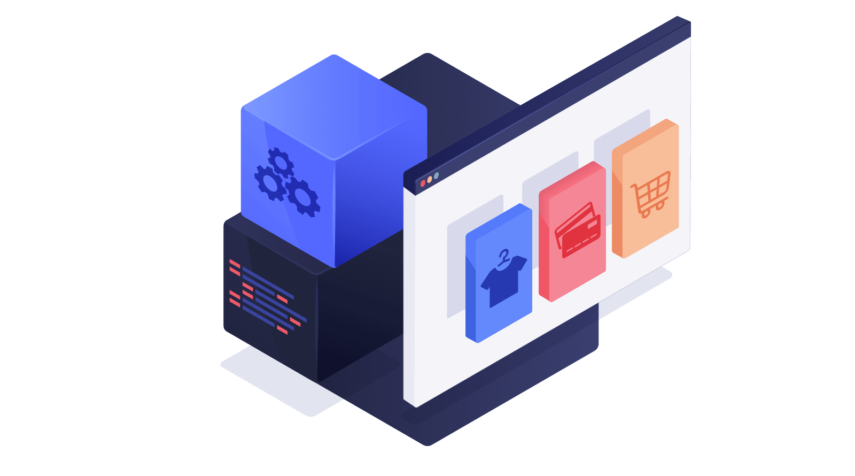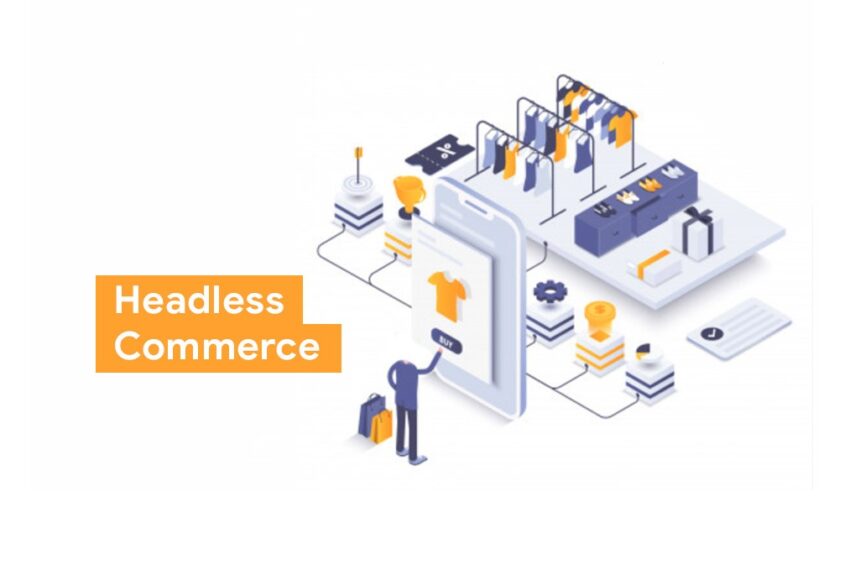In recent years, the e-commerce industry has undergone a significant transformation. With the rise of mobile commerce, social commerce, and the Internet of Things (IoT), businesses seek new ways to engage with customers and offer personalized, seamless shopping experiences.
One of the emerging trends in e-commerce is headless commerce, an approach that separates the front-end and back-end of an e-commerce platform to enable greater flexibility and customization.
In this article, we’ll explore what headless commerce is, why it’s becoming increasingly popular, and how it can benefit your e-commerce business.
What Is Headless Commerce?

Headless commerce is an e-commerce approach that separates the front-end presentation layer from the back-end commerce layer. This means that the content management system (CMS), user interface (UI), and design elements are decoupled from commerce functionality, such as payment processing, order management, and inventory management. In other words, headless commerce provides a flexible and customizable architecture that allows businesses to create unique customer experiences without being tied to a specific technology stack or platform.
In a traditional e-commerce architecture, the front-end and back-end are tightly coupled, making it difficult to update or change certain features without disrupting the entire platform. With headless commerce, businesses can choose from various front-end frameworks like React or Vue.js and connect them to their back-end commerce functionality through APIs. This means businesses can easily customize and update their e-commerce platform without disrupting the customer experience or sacrificing functionality.
Why Is Headless Commerce Becoming Popular?

Headless commerce is becoming increasingly popular for several reasons. First, it allows businesses to create a unique and personalized customer experience that meets the specific needs of their customers. Businesses can create a custom user interface that reflects their brand and provides a seamless customer experience across multiple channels by decoupling the front-end and back-end.
Second, headless commerce enables businesses to easily adapt to changing market conditions and customer preferences. By using an API-first approach, businesses can quickly integrate new technologies and services into their e-commerce platform without having to rewrite or replace the entire platform. This means that businesses can stay ahead of the competition by offering new features and capabilities that meet the changing needs of their customers.
Finally, headless commerce provides greater scalability and performance compared to traditional monolithic e-commerce platforms. By separating the front-end and back-end, businesses can scale each component independently, allowing them to handle traffic spikes and high demand without compromising the customer experience.
How Can Headless Commerce Benefit Your E-Commerce Business?

Headless commerce can benefit your e-commerce business in several ways. First, it provides greater flexibility and customization, allowing you to create a unique customer experience that reflects your brand and meets the specific needs of your customers. Decoupling the front-end and back-end allows you to easily update and modify your e-commerce platform without disrupting the customer experience or sacrificing functionality.
Second, headless commerce enables you to easily adapt to changing market conditions and customer preferences. By using an API-first approach, you can quickly integrate new technologies and services into your e-commerce platform without having to rewrite or replace the entire platform. This means that you can stay ahead of the competition by offering new features and capabilities that meet the changing needs of your customers.
Finally, headless commerce provides greater scalability and performance compared to traditional monolithic e-commerce platforms. By separating the front-end and back-end, you can scale each component independently, allowing you to handle traffic spikes and high demand without compromising the customer experience.
What Are the Various Components of a Headless Commerce Stack?
A headless commerce stack typically consists of several different components, each responsible for a different aspect of the eCommerce platform. Here are some of the key components of a headless commerce stack:
- eCommerce platform: This is the core platform that manages the backend functionality of the eCommerce site, such as inventory management, order processing, and payment processing.
- Content management system (CMS): This platform manages the creation and delivery of content to the eCommerce site, such as product descriptions, blog posts, and marketing materials.
- Customer relationship management (CRM) system: This platform manages customer interactions and data, such as customer profiles, order history, and marketing preferences.
- Product information management (PIM) system: This is the platform that manages product data and information, such as product descriptions, images, and pricing.
- Order management system (OMS): This platform manages the processing and fulfillment of orders, including inventory management, shipping, and returns.
- Payment gateway: This platform handles online payment processing, ensuring that transactions are secure and compliant with relevant regulations.
- Shipping and logistics software: This platform manages the shipping and delivery of products, including tracking and logistics management.
- Analytics and reporting tools: These tools help businesses track key metrics and data related to their eCommerce site, such as sales volume, customer behavior, and marketing effectiveness.
- API gateway: This platform manages the API calls between different components of the headless commerce stack, ensuring that data is transmitted securely and efficiently.
- Frontend application: This platform manages the eCommerce site’s user interface and user experience, providing customers with an intuitive and engaging shopping experience. You should opt for a FEaaS provider (like Vue Storefront) that offers ready integrations and PBCs with all the leading commerce platforms. This makes the move to a headless architecture quick and cost-effective all around. The faster you get to market, the sooner you will reap the rewards of the migration.
Wrap It Up

Overall, a headless commerce stack consists of various components, each responsible for a different aspect of the eCommerce platform. By building a modular and composable eCommerce stack, businesses can create a highly flexible, scalable, and customizable eCommerce solution that meets their specific business needs and provides an optimal customer experience—all while attracting and retaining the best developers with this exciting new coding trend.
In conclusion, headless commerce is an emerging trend in the e-commerce industry that offers greater flexibility, customization, and scalability compared to traditional monolithic e-commerce platforms. It offers multiple technical and business benefits that will significantly improve your business’s bottom line.
Related Posts:
- What is an Introduction in Academic Writing?
- What does a QA Automation do? Introduction to the profession
- Social Media Advertising: An Introduction to Facebook Ads
- The E-commerce Game-Changer: 2-Day Guaranteed…
- Hyva Themes: A New Hype or a Good Perspective for E-commerce
- The Atomy Revolution: How Atomy E-Commerce is…








